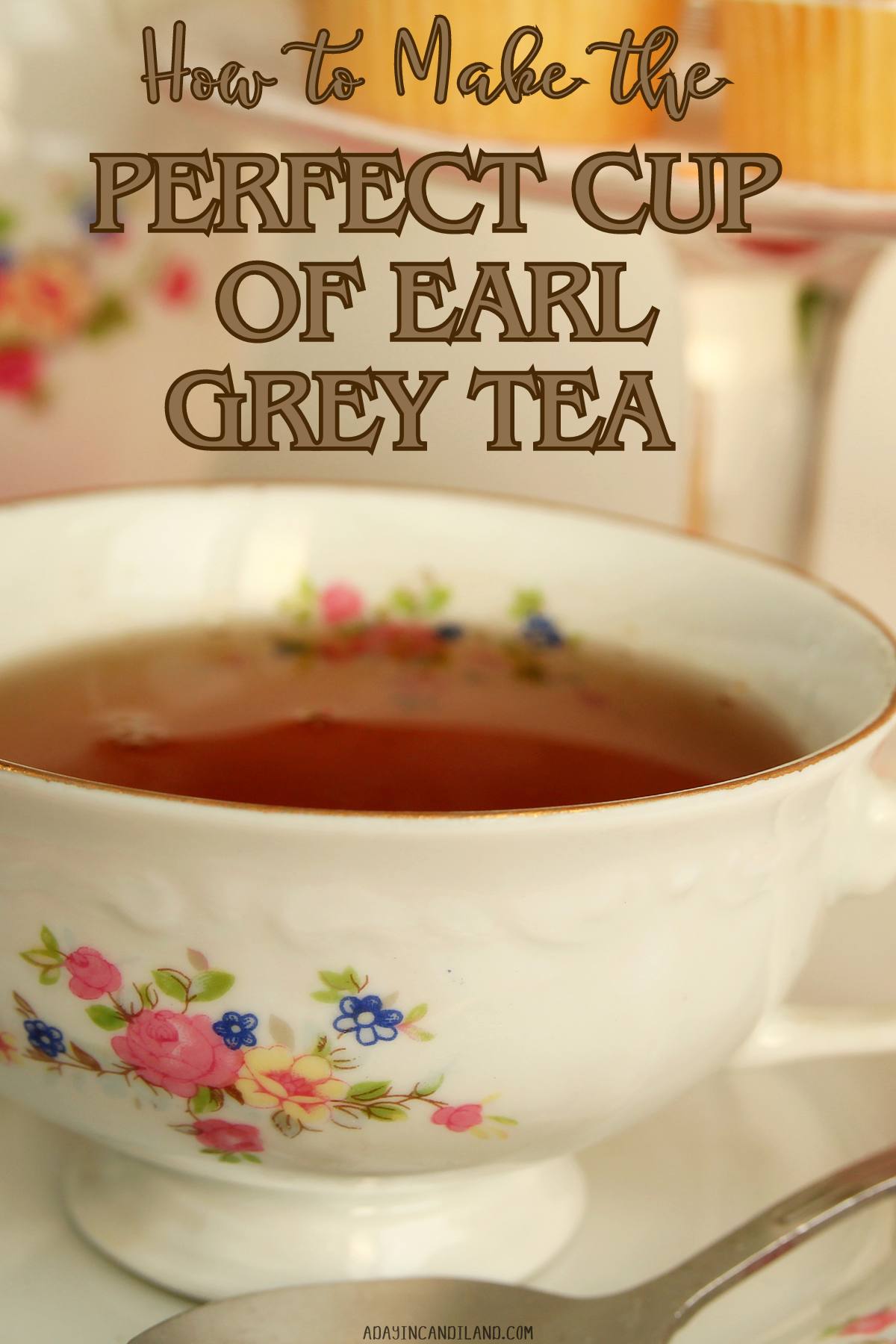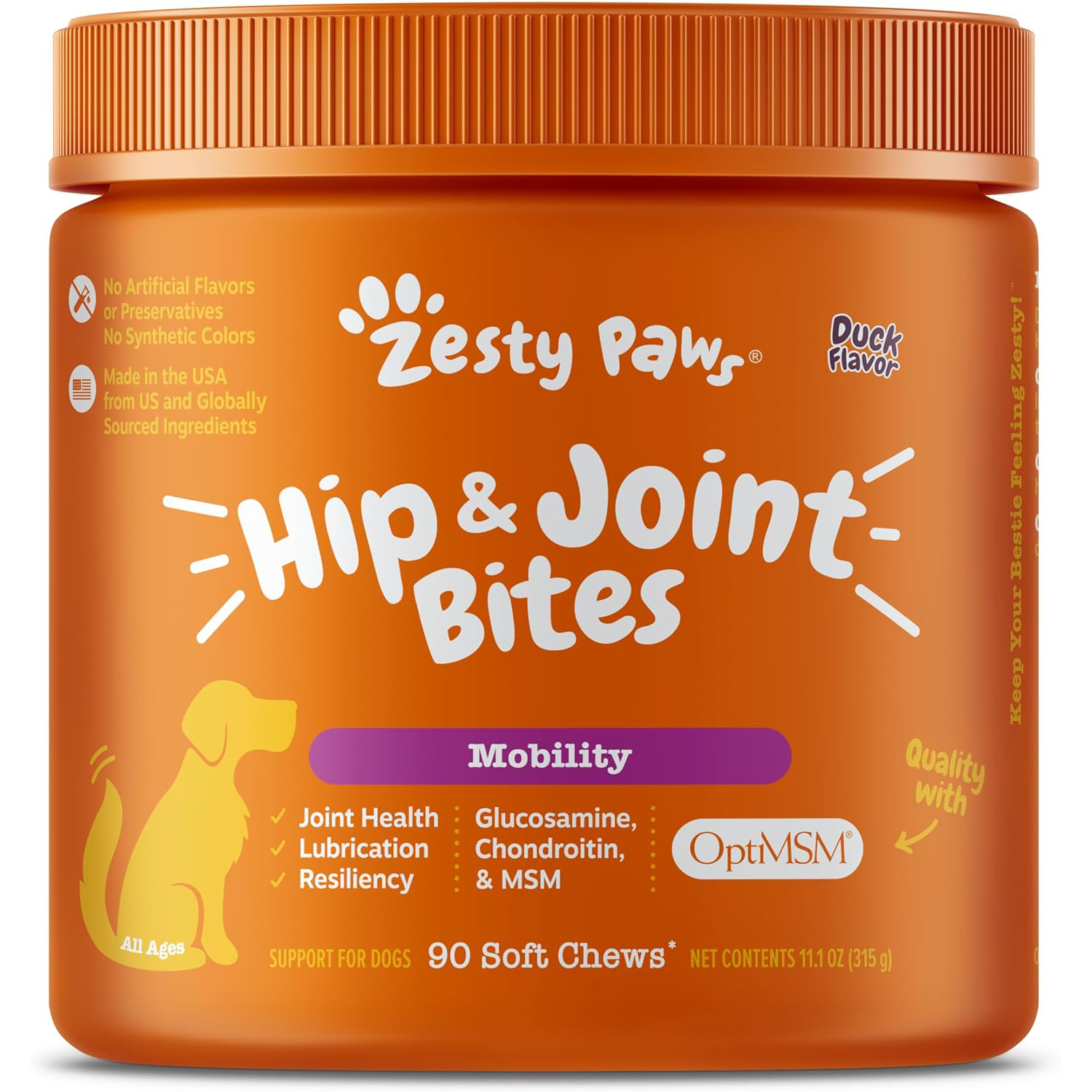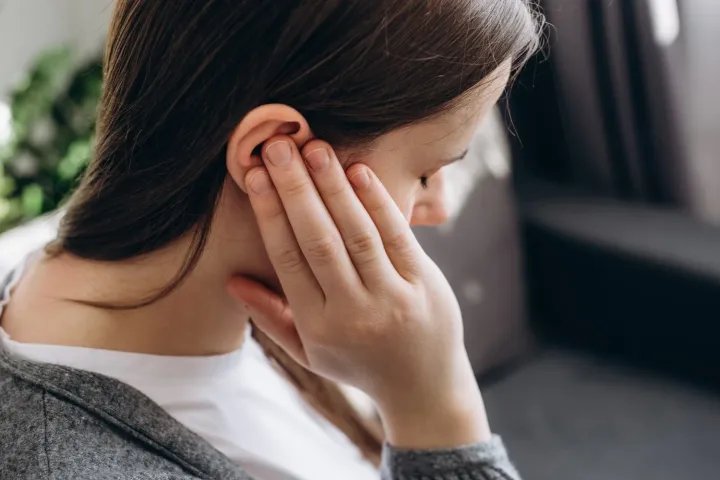The Bergamot Buzz - Unraveling Earl Grey's Story

Imagine sipping a steaming cup of Earl Grey on a drizzly morning, the citrusy aroma of bergamot instantly transporting you to a world of tranquility. But have you ever wondered what makes this quintessential tea so special? With the global tea market projected to reach $73.4 billion by 2027, the story of Earl Grey's signature ingredient - bergamot - is more fascinating than ever. Recently, a surge in demand for organic and sustainably sourced bergamot has put the spotlight on the citrus fruit's Italian roots. Let's dive into the world of bergamot and unravel the story behind the tea that's been a staple in British culture for centuries - and why it's becoming increasingly relevant in today's wellness-conscious world.
A Cup of History: The Origins of Earl Grey Tea
You're probably familiar with the distinctive flavor of Earl Grey tea, but have you ever wondered where it came from? Let's take a step back in time. Earl Grey tea originated in the 19th century, and it's named after Charles Grey, the 2nd Earl Grey. He was a prominent British politician who served as Prime Minister from 1830 to 1834. But what's interesting is that the tea wasn't directly created for him, despite bearing his name. So, what's in Earl Grey tea that gives it that unique twist? The magic happens when black tea is combined with bergamot oil, which is extracted from the rind of bergamot oranges. These citrus fruits are primarily grown in Italy, and the oil's citrusy flavor perfectly complements the robustness of black tea. There's something undeniably charming about the way these two ingredients work together, don't you think? The exact circumstances of Earl Grey tea's creation are shrouded in mystery. There are various theories and stories, but one popular account suggests that a Chinese mandarin presented Charles Grey with a special tea blend as a gift. Another theory claims that the tea was created by a British tea merchant who added bergamot oil to offset the high levels of calcium in the water at Grey's estate, Howick Hall. Whatever the true story is, one thing's for sure – Earl Grey tea has become a beloved classic around the world. The numbers back up its popularity, too. According to the Tea Association of the USA, Earl Grey tea is one of the top-selling tea varieties in the United States. And it's not hard to see why – its unique flavor profile has captured the hearts of tea enthusiasts everywhere. Whether you're a longtime fan or just discovering Earl Grey, there's no denying its allure. As we dive deeper into the story of Earl Grey tea, we'll explore the different theories surrounding its creation and what makes it so special. For now, let's just say that this tea's rich history and distinctive flavor make it a fascinating topic to explore.
The Bergamot Factor: What Makes Earl Grey Unique
So, what makes Earl Grey tea so distinctively delicious? It's all about the bergamot oil, folks! This citrusy superstar gives the tea its characteristic flavor and aroma. You're probably familiar with the scent of bergamot - it's like a breath of fresh air, right? But did you know that this oil is extracted from the rind of bergamot oranges, primarily grown in Italy? In fact, the Calabria region in southern Italy is responsible for producing most of the world's bergamot oil. The flavor profile of bergamot is often described as a combination of lemon and orange, but it's so much more than that. It's bright, citrusy, and slightly sweet, with a hint of bitterness that balances out the flavors. When paired with the robust taste of black tea, it creates a match made in heaven. The bergamot oil is carefully extracted through a process called cold-pressing, which ensures that the oil's flavor and aroma are preserved. Let's talk numbers for a second. Did you know that it takes around 200-300 bergamot oranges to produce just one kilogram of bergamot oil? That's a lot of oranges! But trust me, it's worth it. The unique flavor and aroma of bergamot oil are what set Earl Grey apart from other teas. You can taste the difference, and that's what makes it so beloved.
Bergamot's Flavor Profile: A Closer Look
So, what does bergamot taste like, exactly? Imagine a slice of orange peel, perfectly ripe and juicy, mixed with a hint of lemon zest and a touch of sweetness. That's bergamot in a nutshell. When you take a sip of Earl Grey, the bergamot oil hits your taste buds first, followed by the smooth, malty flavor of the black tea. It's a flavor combination that's both soothing and invigorating at the same time. Bergamot's unique flavor profile is also what makes it a popular ingredient in perfumes and aromatherapy. Its citrusy scent has been known to uplift and calm the mind, making it a great addition to your morning tea routine. Whether you're a tea aficionado or just discovering the joys of Earl Grey, you can't deny the magic of bergamot. Dive deeper: [The history of bergamot in tea]((link unavailable)) [How to brew the perfect cup of Earl Grey]((link unavailable)) [Bergamot's benefits for skin and health]((link unavailable))
Health Benefits: The Good Stuff in Earl Grey
Let's get straight to the good stuff. You're sipping on Earl Grey, and you're wondering what's in it for you. Well, aside from the delightful citrus flavor, Earl Grey tea is packed with antioxidants. These tiny warriors help protect your cells from damage caused by free radicals, which can contribute to aging and diseases. In fact, studies have shown that bergamot oil, a key ingredient in Earl Grey, has potent antioxidant properties that can help shield your cells from harm. One of the most exciting benefits of Earl Grey is its potential to reduce anxiety and stress. The bergamot oil in Earl Grey has a calming effect on the mind and body, which can be a lifesaver on those days when you're feeling overwhelmed. A study published in the Journal of Affective Disorders found that bergamot essential oil reduced anxiety and depression symptoms in patients with chronic stress. You can imagine the benefits of sipping a warm cup of Earl Grey on a chaotic day! Earl Grey has also been linked to improved heart health. The flavonoids present in black tea, the base for Earl Grey, have been shown to help lower blood pressure and cholesterol levels. A study published in the Journal of Agricultural and Food Chemistry found that regular consumption of black tea can reduce the risk of cardiovascular disease by up to 21%. That's music to your heart, right? Let's talk inflammation for a second. Chronic inflammation can lead to a host of health issues, from arthritis to diabetes. The good news is that Earl Grey's bergamot oil has anti-inflammatory properties that may help reduce inflammation. In a study on mice, bergamot oil was shown to decrease inflammation and oxidative stress. While more research is needed, it's promising to see the potential benefits of this citrusy tea. So, there you have it – Earl Grey's health benefits are more than just a pretty flavor. With its antioxidants, anxiety-reducing properties, and potential heart health benefits, Earl Grey is a tasty way to boost your well-being.
Brewing the Perfect Cup: Tips and Tricks

You've got the tea, now let's get brewing. The secret to a great Earl Grey lies in the details. Start with high-quality black tea leaves – Assam or Ceylon work beautifully – and pair them with premium bergamot oil. The bergamot is what gives Earl Grey its signature citrus zing, so don't skimp on quality here.
Steeping Secrets
Steeping time is crucial. You want to let the flavors meld together just right. Steep your tea for 3-5 minutes, depending on your taste buds' preference. Like it strong? Go for 5 minutes. Prefer a lighter taste? 3 minutes is your sweet spot. The Twining's tea company, a legendary Earl Grey purveyor, recommends 3-4 minutes for their blend.
Now, let's talk brewing methods. Don't be afraid to experiment! Cold brew Earl Grey is a game-changer for summer. Just steep your tea leaves in cold water for 6-8 hours, and you've got a refreshing, smooth drink. Or try making an Earl Grey iced tea – it's a classic for a reason. You can even add a twist with lemon or honey for extra flavor depth.
Pro Tips
- Use one teaspoon of loose-leaf tea or one tea bag for every 8 oz of water.
- Water temperature matters – aim for 200°F (93°C) for black tea.
- Play with ratios: try adding a bit more bergamot oil for a stronger citrus flavor.
The beauty of Earl Grey is its versatility. Whether you're a traditionalist or love pushing boundaries, there's an Earl Grey brewing method out there for you. So go ahead, grab your favorite mug, and start brewing!
Potential Drawbacks: The Not-So-Good Stuff
You're probably aware that Earl Grey's got a bit of a caffeine kick. Let's talk about what that might mean for you. If you're sensitive to caffeine, you might want to limit your Earl Grey intake or opt for decaf. A standard 8 oz cup of Earl Grey tea typically contains about 25-30 milligrams of caffeine - roughly a quarter to a third of the amount found in a cup of coffee. For most people, this isn't a big deal, but if you're prone to jitters or have trouble sleeping, you might want to keep an eye on your overall caffeine intake. Bergamot oil, the star of the Earl Grey show, can also interact with certain medications or exacerbate allergies. If you're taking medications like statins or anti-anxiety meds, or if you have a history of skin sensitivity, you should be aware that bergamot oil can increase your skin's sensitivity to sunlight. This condition is called phototoxicity. For example, a 2013 study published in the Journal of Clinical and Aesthetic Dermatology found that bergamot oil can cause skin reactions in some individuals when exposed to UV light. Some Earl Grey blends might also contain artificial flavorings or additives that can be a turn-off for health-conscious tea enthusiasts. You might see ingredients like citral, linalool, or bergamot flavor in the ingredients list. These aren't necessarily bad for you, but if you're trying to avoid artificial ingredients, you might want to look for organic or natural Earl Grey options. Take a look at Twinings' Earl Grey, for instance - their version contains natural flavorings derived from bergamot oil. If you're concerned about the potential drawbacks of Earl Grey, there are steps you can take. Look for high-quality tea brands that use natural ingredients and minimal processing. You can also experiment with brewing your own Earl Grey at home using bergamot peel or essential oils. This way, you can control exactly what goes into your tea.
Beyond the Cup: Earl Grey in Food and Culture
You've probably noticed Earl Grey's presence extending far beyond the tea cup. This distinctive brew has become a popular ingredient in baked goods, desserts, and even savory dishes. The tea's citrus flavor pairs surprisingly well with fruits, cheeses, and chocolates, making it a versatile addition to many recipes. Let's talk desserts. Earl Grey-infused cakes, tarts, and cookies are a staple in many upscale bakeries. Take, for instance, the famous Ladurée Earl Grey tea cake, which boasts a moist texture and subtle citrus notes. You can even experiment with Earl Grey ice cream, pairing it with honey and figs for a sweet and savory treat.
Savory Twists
Earl Grey's not just limited to sweet treats, though. Its citrus flavor complements rich meats and seafood beautifully. Chefs have been known to add Earl Grey to braising liquids for short ribs or use it as a marinade for salmon. The bergamot flavor adds a bright, citrusy note that cuts through the richness of the dish.
Cultural Icon
Earl Grey has become a cultural icon, referenced in literature and art. You might recall the famous Sherlock Holmes story "The Adventure of the Bruce-Partington Plans," where the detective is fueled by Earl Grey tea. In art, the tea has been featured in still-life paintings and photography, often symbolizing refinement and sophistication. You might be surprised to learn that Earl Grey has even inspired a perfume, Bergamote by Jo Malone, which captures the citrusy essence of the tea. Whether you're a foodie, a literature buff, or just a fan of fine tea, Earl Grey's unique flavor and cultural significance make it a fascinating topic to explore. From tea-soaked cakes to perfumes and literary references, Earl Grey's influence extends far beyond the cup. Its distinctive flavor and aroma have captivated people around the world, cementing its place in both culinary and cultural landscapes.
The Future of Earl Grey: Trends and Innovations
You're probably wondering what's next for Earl Grey. Well, let's dive into the trends that are shaping the future of this beloved tea. Sustainable and eco-friendly tea production methods are on the rise. Brands like Teabox and Vahdam are already using compostable packaging and sourcing tea leaves from environmentally conscious farms. You can expect to see more of this shift towards sustainability in the industry. But sustainability is just the beginning. New flavor combinations and blends are being experimented with, and it's getting exciting. Imagine Earl Grey infused with rose petals or citrus notes of yuzu. Some tea brands are even incorporating adaptogenic herbs like ashwagandha and ginseng into their Earl Grey blends. These unique flavor profiles are attracting a new generation of tea enthusiasts who crave something different.
Modern Twists on a Classic
Earl Grey is being reimagined in modern tea culture. You're no longer limited to just a cup of tea; you can now enjoy Earl Grey in tea lattes, tea-based cocktails, and even Earl Grey-infused desserts. The team at The Tea Forté has created an Earl Grey tea latte recipe that's a must-try. There's also the Earl Grey Old Fashioned, which adds a citrusy twist to the classic cocktail.
What's Next?
As the tea industry continues to evolve, you can expect to see more innovation and creativity in the world of Earl Grey. With the rise of tea-based beverages, it's likely that we'll see Earl Grey featured in more cafes and restaurants. If you're a tea enthusiast, now's the time to experiment with new flavor combinations and brewing methods. Try pairing Earl Grey with different milks or sweeteners to create your perfect cup. The future of Earl Grey is looking bright, and it's all about experimentation and innovation. With sustainability, unique flavor profiles, and modern twists on a classic, there's never been a better time to be an Earl Grey fan. So, what's your take on Earl Grey's future? Are you team traditional or team experimental?
















Comments ()